Do you have a lawn or garden and are trying to decide which type of fertilizer is right for your grass or plants? Starting up a greener, healthier lawn can seem overwhelming if you’re not sure what kind of fertilizer to use. Fortunately, understanding the differences between regular fertilizers and lawn starter fertilizers isn’t too hard–once you know the basics! In this blog post, we will explore all the details about both types of fertilizers. We’ll start by discussing how each one works its magic on your plants before delving into when these two products should (or shouldn’t) be used. By learning more about the basics of both turf-enriching solutions, it’ll ultimately help you make an informed decision on the best product for your yard’s needs. So let’s dive in!
Table of Contents
Why Is Fertilizer Important For Your Lawn?
Having a lush and healthy lawn is important for many reasons. Not only does a well-manicured lawn add aesthetic value to your home, but it can also add to its overall market value. To keep your lawn looking its best, applying fertilizer is an essential part of the maintenance process. Fertilizer helps promote growth by providing plants with the necessary nutrients they need to develop strong roots, thicker stems, and vibrant green foliage. Without regular fertilizing, you run the risk of having a patchy or discolored lawn that cannot withstand extreme weather conditions.
What Is a Starter Fertilizer?
Starter fertilizers are specially formulated to give a new lawn the boost it needs when first planted. They’re typically high in phosphorus, which helps promote root growth and development at the early stages of a lawn’s life. Starter fertilizers also contain other essential nutrients like nitrogen and potassium, which help to encourage vigorous growth. Unlike regular fertilizer, starter fertilizer should not be used for established lawns as too much phosphorus can inhibit grass from growing properly. [1]
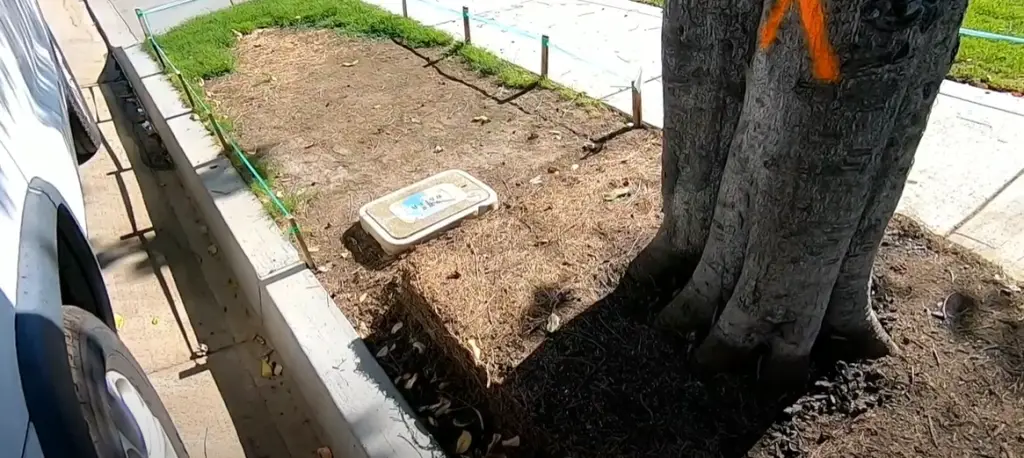
When Should I Use Starter Fertilizer On My Lawn?
Starter fertilizer is best for newly planted lawns, or when overseeding an existing lawn. Starter fertilizer is enriched with a high amount of nitrogen, which encourages swift germination and root growth for new seedlings. This helps them build sturdy foundations quickly to start thriving in their environment.
When using starter fertilizer on your lawn, it’s important to read and follow all instructions carefully. Too much nitrogen can create a weak lawn, and too little won’t be sufficient to help establish the grass or reduce weed pressure.
Additionally, starter fertilizer should not be used on established lawns that are in good condition—this can cause excessive top growth and inhibit root development. For these reasons, it is best to consult a local lawn care specialist if you are unsure of how or when to use starter fertilizer on your lawn. [2]
Can I Use Starter Fertilizer On Mature Grass?
Yes, you can use starter fertilizer on mature grass. Regular fertilizer is designed to replenish nutrients in established grass, while starter fertilizer helps provide the extra kick of nutrition needed for new seedlings to grow into a healthy lawn. However, if your mature grass still needs extra nutrition or if it’s been several months since you last treated it with regular fertilizer, then a starter fertilizer could be beneficial.
Starter fertilizers are generally lower in nitrogen than regular fertilizers and formulated with a higher phosphorus content. The phosphorus helps stimulate root growth and enhances overall turfgrass health by improving stress tolerance. In addition to providing essential soil nutrients for newly planted grass, starter fertilizers also help strengthen existing roots. This is beneficial when overseeding an existing lawn with grass seed, as the starter fertilizer will help both old and new grass establish a healthy root system.
It’s important to note that starter fertilizers are formulated differently than regular fertilizers, so make sure you read the label carefully before use. For best results, apply according to package directions after mowing your lawn and avoid over-application. Too much fertilizer can cause burning or other damage to your turfgrass. If using starter fertilizer for mature grass, it’s also a good idea to follow up with regular maintenance applications of regular fertilizer over the course of the season in order to keep your lawn healthy and lush.
What Is a Regular Fertilizer?
Regular fertilizer is a chemical compound that contains nutrients to encourage plant growth. It typically comes in two forms: liquid and granular. Liquid fertilizer can be sprayed directly on grass or plants, while granular sulfur requires mixing with water before it can be applied to the soil. Regular fertilizers generally contain nitrogen, phosphorus, and potassium (NPK) as the primary macronutrients necessary for healthy turfgrass growth, but may also include micronutrients such as iron, magnesium, zinc, copper, boron and manganese.
However, regular fertilizers lack some of the essential components found in lawn starter fertilizers that are needed to establish healthy roots systems and vigorous top-growth in newly seeded lawns. [3]

When Should I Apply Regular Fertilizer On My Lawn?
Regular fertilizer should be applied to your lawn in the early spring or late fall. Early spring applications will help get your lawn off to a strong start and establish a healthy root system. Late fall applications, on the other hand, can help strengthen the grass going into winter and prepare it for full growth in the spring.
It’s important to note that different types of grasses require different amounts of fertilizer so it’s best to do some research before you begin fertilizing in earnest. The type of soil on your property also makes a difference when it comes to how much fertilizer you should apply, so consult with a local expert if you’re not sure.
Lawn Starter Fertilizer Vs. Regular Fertilizer: What’s the Difference?
When it comes to lawn care, there are many different types of fertilizers on the market. Two popular options are Lawn Starter Fertilizer and regular fertilizer. While both will help nourish your lawn’s soil and keep it healthy, each type of fertilizer has its own unique advantages and disadvantages.
Lawn starter fertilizer is specifically formulated to provide nutrients in the early stages of a new lawn or in an existing one that is being reseeded or overseeded. It contains higher levels of phosphorus along with nitrogen and potassium, which aid in root development for newly planted grasses. The slow-release formula also helps to sustain even growth over time, allowing the grass to develop a strong root system.
Regular fertilizer, on the other hand, contains a balanced blend of nitrogen, phosphorus and potassium for both quick green-up as well as overall plant health. Regular fertilizers are designed to be applied throughout the season to help sustain healthy lawns. They are also more affordable than lawn starter fertilizers due to their lower percentages of essential nutrients.
When deciding between Lawn Starter Fertilizer and regular fertilizer, consider your own particular needs and budget. Both types of fertilizers will keep your lawn looking its best with proper use; however, if you’re starting a new lawn or overseeding an existing one, then Lawn Starter Fertilizer is the way to go in order to give your grass the best chance to thrive and develop a strong root system.
On the other hand, if you have an established lawn, then regular fertilizer is probably the better option since it can provide quick green-up as well as sustained seasonal health. No matter which one you choose, be sure to follow the instructions for application rates and timing, so that your lawn receives optimal benefits from whichever type of fertilizer you decide to use.
Ultimately, Lawn Starter Fertilizer and regular fertilizer both play an important role in healthy lawns; however, each type of fertilizer has its own advantages and should be selected according to your specific needs. With proper use of either type of fertilizer, your lawn will remain lush and vibrant all season long!
Can I Use Regular Fertilizer On My New Lawn?
No, regular fertilizer is not recommended for new lawns. Regular fertilizer provides all the essential nutrients that grass needs to grow and thrive, but it can also be too intense for young, newly planted seedlings. New lawns require a gentler approach and a specific type of fertilizer meant specifically for new grass: Lawn Starter Fertilizer.
Lawn Starter Fertilizer is specially formulated to meet the unique needs of a new lawn. It contains more phosphorus than regular fertilizers, which helps promote strong root growth and encourages vigorous growth in the early stages of development. In addition, it contains lower levels of nitrogen and potassium than traditional fertilizers, which prevents overloading your turf with excessive amounts of these minerals while allowing it to focus on establishing a strong root system.
Unlike regular fertilizer, Lawn Starter Fertilizer can be applied at least once per season and should always be used in conjunction with regular fertilizers. This helps ensure that your new lawn gets the best of both worlds: an immediate boost of nutrients from the starter fertilizer and a consistent, long-term nutrient supply from the regular fertilizer. [4]
Which One Should I Choose?
With so many options, it can be hard to decide which type of fertilizer is best for your lawn. Ultimately, the best option depends on your goals and budget. If you are looking to get the most bang for your buck and don’t mind waiting a bit longer before seeing results, then regular fertilizer may be the better choice. Regular fertilizers contain a mix of nutrients like nitrogen, phosphorus and potassium that will help feed your lawn over time. They are typically more cost-effective than lawn starter products since they don’t require an additional application after seeding or overseeding.
Ultimately, you should choose the type of fertilizer that best meets your needs. If you are looking for a more cost-effective option with slightly slower results, then regular fertilizers are ideal. However, if you have the budget and want fast results, then lawn starter products can provide exactly what you need. With either option, make sure to follow all instructions on the packaging carefully to get optimal results!
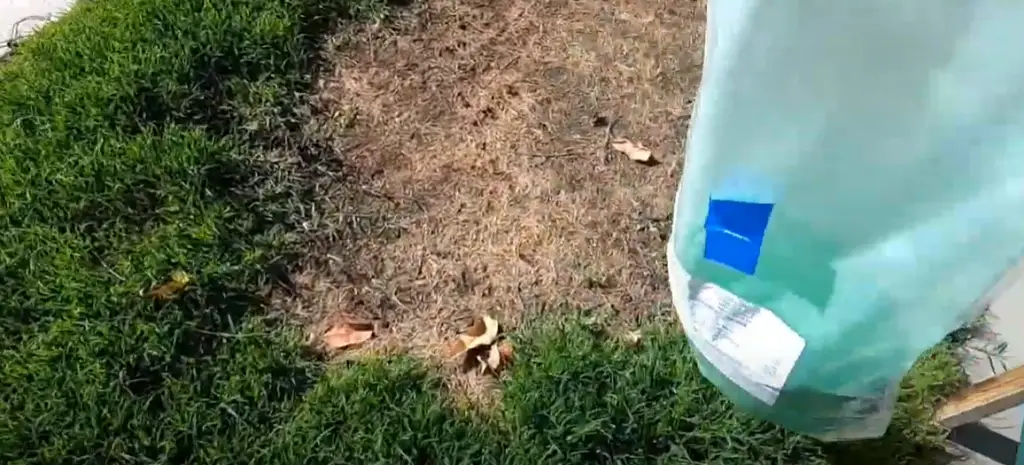
How To Use Lawn Starter Fertilizer?
Using a lawn starter fertilizer is an easy and effective way to give your lawn the nutrition it needs. Here are some tips for using lawn starter fertilizer correctly:
- Read the label: It’s important to read the label on the fertilizer carefully so that you understand the application rate and precautions you need to take.
- Apply early in spring: The best time to apply lawn starter fertilizer is early in spring, when temperatures start to rise and plants begin their growth cycle. This will ensure that your plants have access to nutrients throughout their growing season.
- Use slow-release products: Slow-release fertilizers can help ensure that your plants receive all of the nutrients they need over time, instead of all at once.
- Water the lawn: It’s important to water your lawn after applying fertilizer in order to ensure that it is properly absorbed by the soil.
By following these simple steps, you can be sure that your lawn will receive the nutrition it needs for a healthy, lush green look all season long! [5]
How To Use Regular Fertilizer?
Using regular fertilizer is relatively simple. First, you must decide which type of fertilizer to use based on the needs of your lawn. There are three common types: nitrogen-rich fertilizers, phosphorus-rich fertilizers, and potassium-rich fertilizers. You can obtain a soil sample from your local garden center to help determine which type is best for your lawn.
Once you have selected a fertilizer type, you will need to apply it according to the instructions on the package. Depending on the size of the area being treated, you may need a spreader or sprayer tool for even coverage. After applying an appropriate amount of fertilizer over the desired area, be sure to water it in thoroughly so that it has time to take effect! [6]
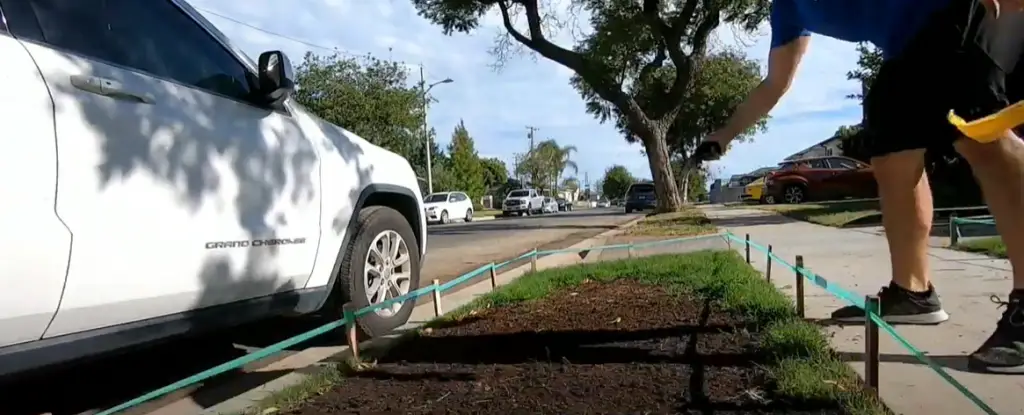
FAQ
Do you really need starter fertilizer?
Yes, if you want your lawn to get off to a good start with strong root growth. Starter fertilizer contains higher levels of phosphorus than regular fertilizer and is specifically designed to promote healthy germination and root development in newly seeded areas or existing lawns.
Can I use regular fertilizer instead of starter fertilizer?
No, the two are not interchangeable. Regular fertilizers contain other components such as nitrogen and potassium which can be beneficial for a well-established lawn but are not necessary during establishment. Using regular fertilizer instead of starter fertilizer may lead to poor results when trying to establish a new lawn.
How often should I apply starter fertilizer?
It’s recommended that you apply starter fertilizer twice when establishing a new lawn, once when you first plant the seed and again four to six weeks later. After that, you can switch to regular fertilizer for maintenance.
What should I look for in a starter fertilizer?
When selecting a starter fertilizer, it’s important to find one that has the right NPK (nitrogen, phosphorus and potassium) ratio. A good combo is 5-10-5 or 10-20-10 for turfgrass; these ratios contain higher amounts of phosphorus to promote root growth. Additionally, look for fertilizers with slow-release nitrogen as this will slowly feed your grass over time instead of providing it all at once.
Can I use too much starter fertilizer?
Yes, it’s possible to apply too much starter fertilizer. When used in excess, the extra nutrients can cause rapid growth and other problems. It’s important to follow the package instructions carefully when applying starter fertilizer so you don’t overdo it.
Can I mix regular and starter fertilizers?
No, mixing fertilizers is not recommended as they have different nutrient ratios and release times. Doing so may end up creating a formulation that is inappropriate for your lawn or could even be harmful. For best results, stick with one type of fertilizer at a time.
What is regular fertilizer?
Regular fertilizer is a blend of essential nutrients, such as nitrogen, phosphorus, and potassium (NPK). These are necessary for healthy plant growth and development. Regular fertilizers also typically contain trace elements, like iron, manganese, zinc, copper or boron. Typically sold in granular form, regular fertilizers are either fast-acting or slow-release depending on the formulation. Fast-acting fertilizers provide rapid greening results but may need to be applied more frequently over time to maintain optimal lawn health. Slow-release fertilizers last longer between applications and can help promote deep root growth over time.
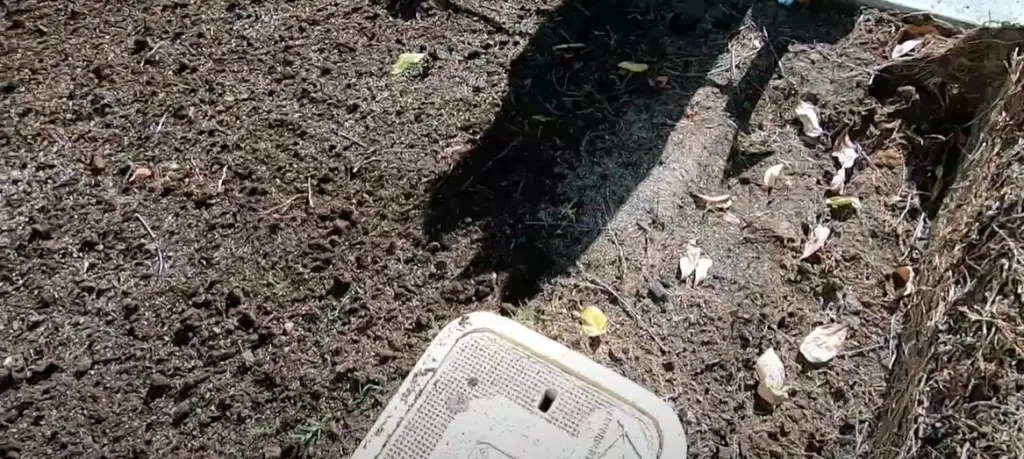
Is all purpose fertilizer good for lawns?
Yes, an all-purpose fertilizer can be used to maintain a healthy lawn. It contains a balance of the essential NPK nutrients needed for optimal plant growth and development. All-purpose fertilizers are usually either fast-acting or slow-release depending on the formulation and generally provide adequate nutrition for most turfgrass species.
Useful Video: Starter Fertilizer Vs. Regular Fertilizer
Conclusion
In conclusion, Lawn Starter Fertilizer and Regular Fertilizer both have their own pros and cons. While Lawn Starter Fertilizer has the benefit of providing quick results, it may not be ideal for areas that need to be maintained over a long period of time. On the other hand, Regular Fertilizer is more suitable for persistent use since its effects take longer to show but can last much longer. It is important to carefully consider your lawn’s needs before making a decision as to which fertilizer would be best for you. Ultimately, choosing the right fertilizer can help keep your lawn healthy and looking great throughout the year!
References:
- https://www.greenseasonslawns.com/blog/lawn-starter-fertilizer-vs-regular-fertilizer/
- https://obsessedlawn.com/lawn-starter-fertilizer-vs-regular-fertilizer/
- https://www.hunker.com/12261883/starter-fertilizer-vs-regular-fertilizer
- https://growyouryard.com/how-often-should-you-apply-starter-fertilizer/
- https://thelawnshed.com.au/lawn-starter-fertiliser-vs-maintenance-fertiliser/
- https://weedkillerguide.com/lawn-starter-fertilizer-vs-regular-fertilizer/

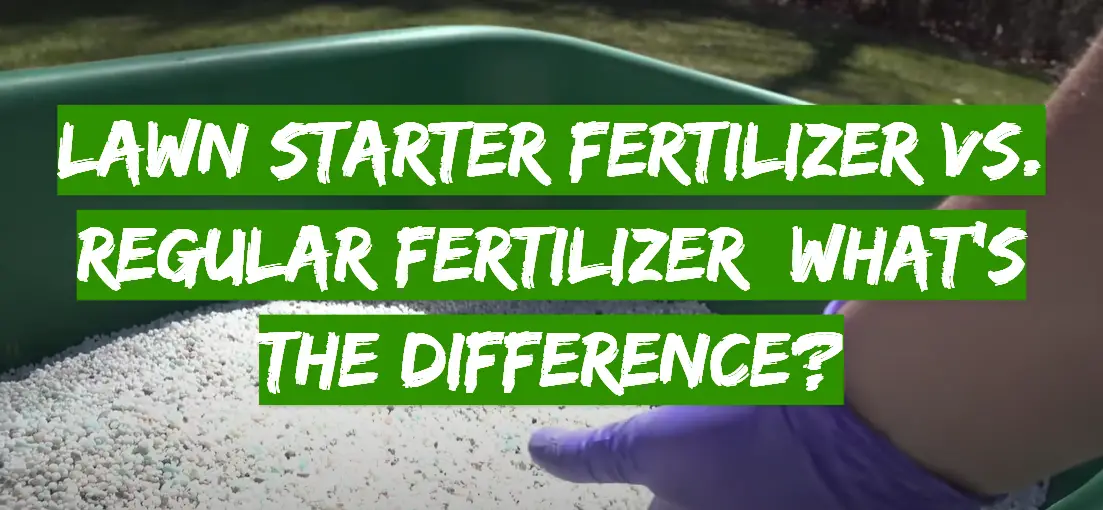




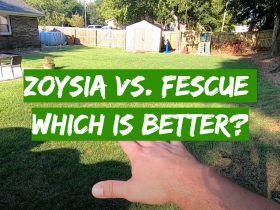
Leave a Reply
View Comments